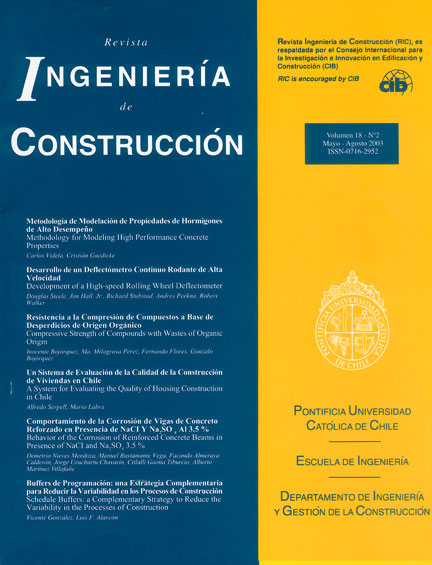BEHAVIOR OF THE CORROSION OF REINFORCED CONCRETE BEAMS IN PRESENCE OF NaCl AND Na2SO4 3.5 %
Keywords:
Corrosion, reinforced concrete, electrochemical noise, corrosion potential, corrosion rateAbstract
This paper presents the results obtained for the behavior of corrosion in reinforced concrete beams, by resorting to measurements of corrosion potentials (ASTM C876) and Electrochemical Noise. These beams are exposed to moistened and drying cycles with 3.5 % sodium sulfate (Na2SO4) and sodium chloride (NaCl). The purpose was settle an alternative in the evaluation of the reinforced concrete structures, using the electrochemical noise technique that is not perturvative to the system in study, and it provides more information than Polarization Resistance technique that is the only that at the moment is applied in the evaluation of reinforced concrete structures using commercial instruments. The evaluation was affected in beams of 20 x 20x 80 cm., reinforced with bars of 3/8 and stirrups of ¼" to each 20 cm, which were divided in four areas of 20 cm each one, having two protected areas and two naked areas, this with the purpose of having very defined the susceptible areas to suffer corrosion. The corrosion potential, in most of the beams presented an uncertainty of the phenomenon of corrosion, for both means, in accordance with the approach of evaluation that stable ASTM C876 and the rate corrosion of the exposed beams in sodium chloride presented a degree of moderate corrosion. While the exposed beams in sodium sulfate had rate corrosion more high in some cases, changing moderate to a very high corrosion degree. This investigation allows to establish thermodynamics and kinetic corrosion parameters without altering the system steelconcrete. It is feasible carry out mensurations with the techniques used in structures in service (bridges, jetties, buildings, etc.).


